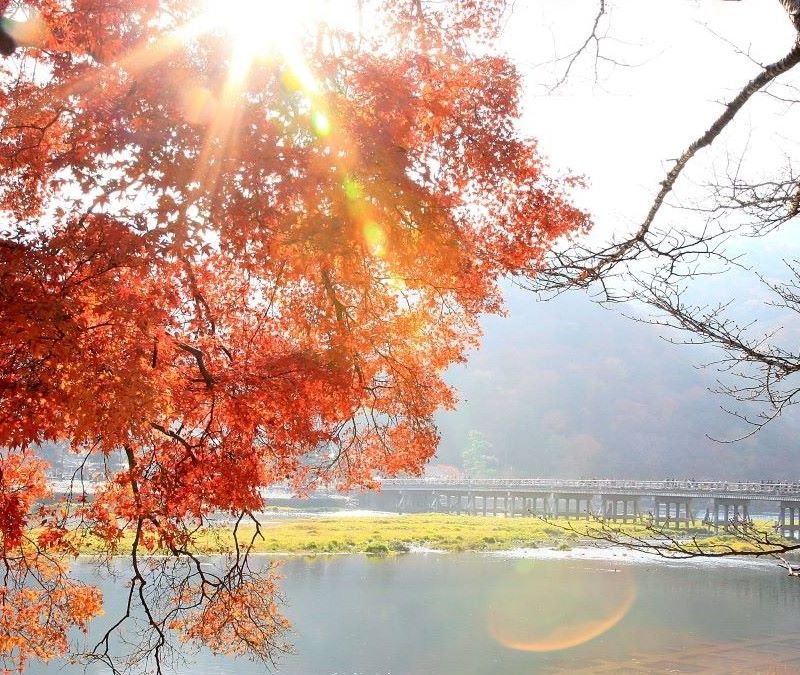
After an early morning start to visit Kyoto’s Fushimi Inari shrine, my husband and I were looking for a relaxing afternoon adventure. Located just 6.2 miles (10 km) west of Kyoto, the sightseeing district of Arashiyama beckoned us with its riverside location nestled against the mountains. Add in temples, imperial villas, and natural forests, it’s not surprising Arashiyama is designated as a ‘Place of Scenic Beauty’ by the Japanese government.
Videos by TravelAwaits
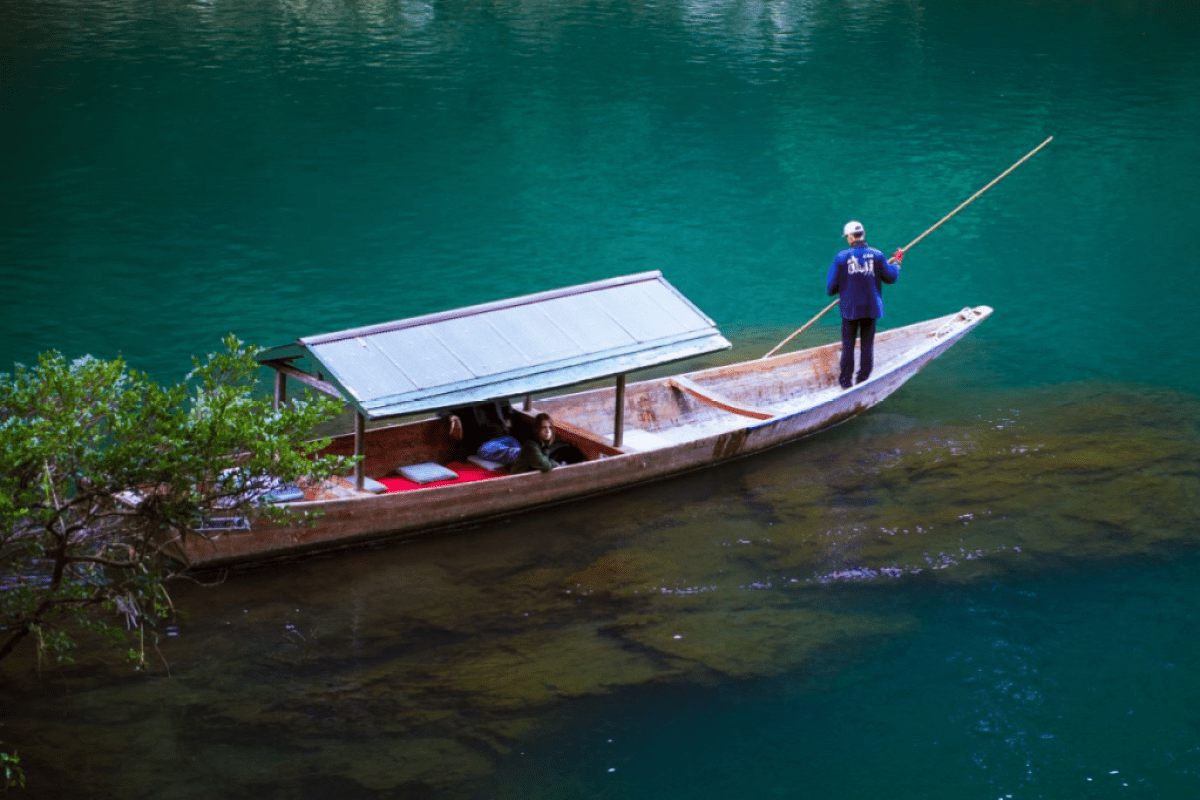
This tranquil riverside town was once a retreat for royalty escaping city life from as early as the Heian period in 794 to 1185 AD. It’s no less compelling today, offering a walk back in time as you stroll the ancient streets surrounded by visitors in traditional dress. It’s easy to reach from Kyoto and definitely worth a visit, even if you just have a few hours.
Pro Tip: Spend the morning visiting shrines in Kyoto, and head to Arashiyama in the afternoon. This timing allows you to see the Kimono Forest lit up in the evening.
How to Get There
Arashiyama is accessible via both the JR Sagano Line and the Hankyu Main line from central Kyoto in 15 to 20 minutes. Another option is to take Keifuku Railways Randen Tram to Arashiyama station. This private electric tram operates small, quaint street car-like trams that let out right at the entrance of the Kimono Forest.
Pro Tip: It’s a good idea to bring cash, as some small shops don’t take credit cards. Also, you might need to show your passport when making a larger purchase in shops that do take credit cards.
Views From the Bridge
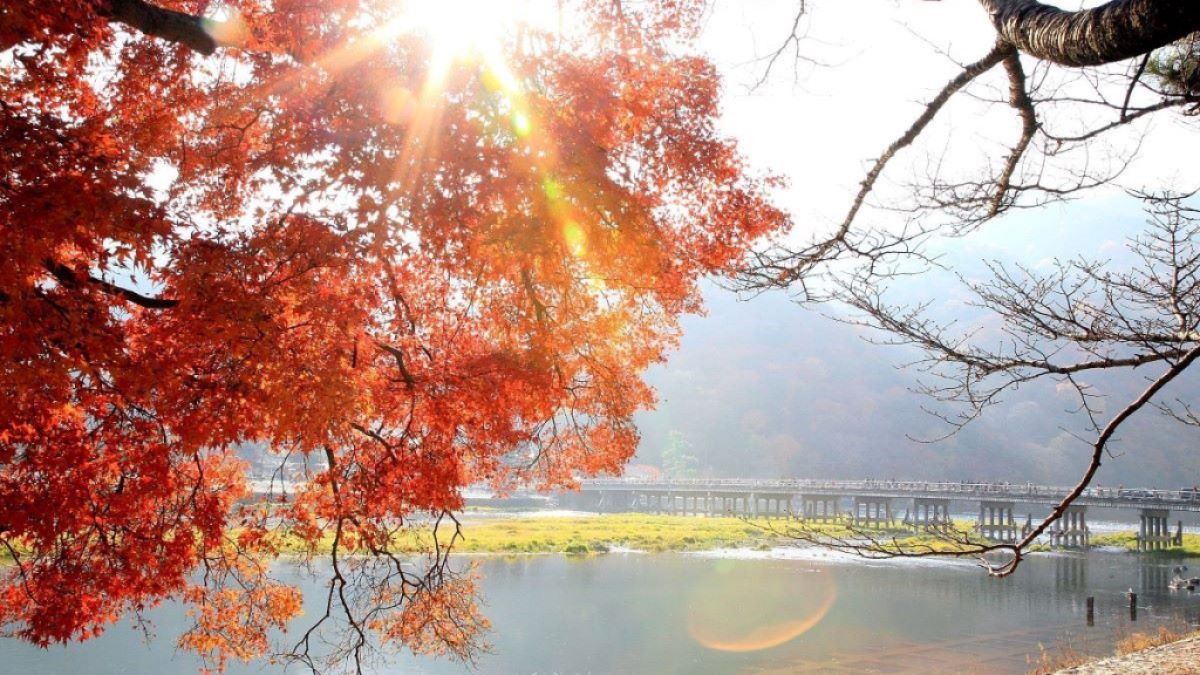
We exited the train station and walked toward the river. Helpful signs in English and Japanese pointed the way. The Togetsukyo Bridge is the main landmark in Arashiyama and a good starting point for a visit. This 400-year-old wooden bridge spanning the Katsura River offers 360-degree views of the hillside, village, and flowing water below.
Arashiyama mountain flanks one side of the river, with fall colors just peeking out on our visit. In spring, cherry blossoms cover the hillside. It’s no wonder many people stop for photos, and filmmakers have been drawn to the bridge for its beauty.
Taking a Boat Trip on the River
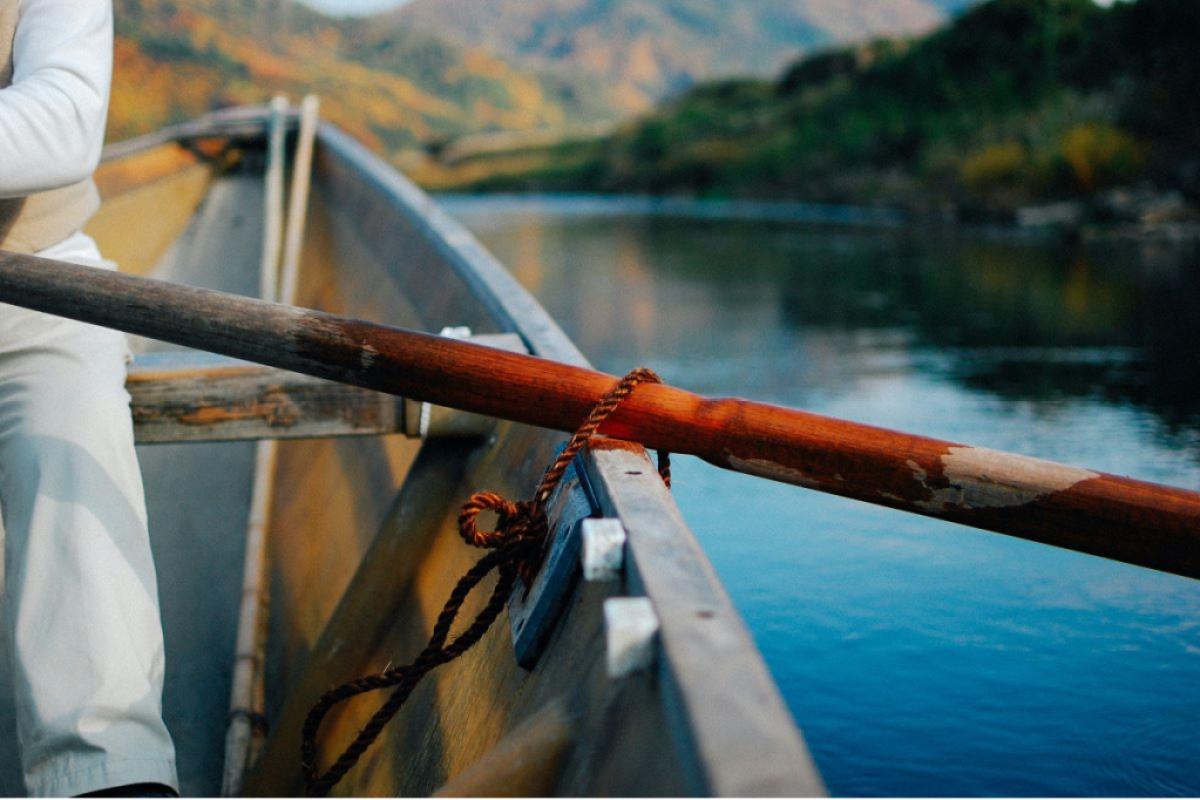
One of the most popular activities in this historic town is taking a boat trip on the river. From the bridge, it’s easy to spot the boat launch sites. There are several options, from renting a rowboat to two-hour excursions. We chose an hour-long trip, with a friendly captain who steered our traditional wooden boat with a single long bamboo oar, pointing out sights along the way.
We removed our shoes before finding a comfy spot on the cushions on the boat’s floor. It was so relaxing, taking in the fall colors on the hillside and watching the cormorants fish as we drifted along. Young Japanese kids in rowboats, laughing and splashing as they tried to avoid crashing into each other provided additional entertainment. I was surprised when another boat motored right up to us, hovering alongside our vessel. It turned out to be a floating kitchen, with a few enterprising women selling squid grilled to order, mochi skewers, beer, and other snacks. Our fellow passengers happily munched away, offering to share their potato chips and squid.
Hiking Trails, Monkeys, and Temples
There’s a line of rickshaw pullers waiting near the boats to give you a ride to the Arashiyama Bamboo Forest or just around the town. When I saw the beads of sweat on the young men’s foreheads, I decided my own two legs were strong enough to take me where I needed to go. Since we had recently hiked through bamboo groves on the Nakasendo Trail, we bypassed the ones in Arashiyama. If you haven’t experienced the grandeur of walking through a bamboo grove, definitely take the time to visit them here.
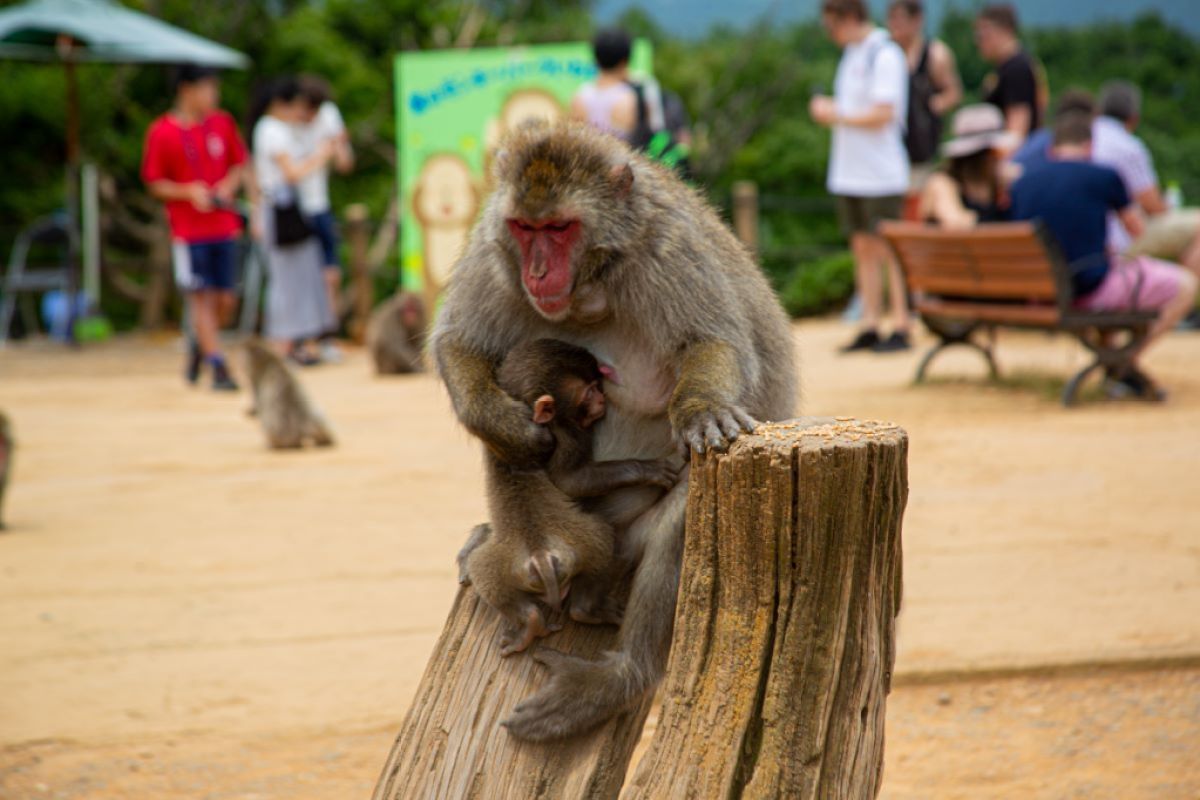
There are walking paths on both sides of the river, and it’s common to see young couples in kimonos and yukatas (traditional casual gowns) posing for photos near the shore. Small shops and cafes dot the walkways. If you cross over the bridge from the train station, there are some trails up the hillside you can climb to take in the vista below. A big attraction on this side is Monkey Park, reached by a 15-minute walk up a steep path. Here, you’ll get up close and personal with dozens of Japanese macaques and enjoy views over the river.
The views grow more impressive as you walk away from town. A few people explored on bicycles, which can be rented at the train station. About one kilometer (0.6 miles) upstream from the bridge, steep stone steps lead up to the Daihikaku Senkoji Temple. Look for the bell tower on the way up; a sign invites you to strike the gong if you wish. I took a turn; when else was I going to have this opportunity? Take note, the sign says you’re limited to three turns.
It’s worth the climb through the forest to enjoy the peaceful meditation hall at the top. Take off your shoes before stepping onto the tatami mat floor, where you can linger in silence to take in the views. This petite Zen temple offers a grand view over Kyoto and the hillside. Binoculars are conveniently available to borrow, and padded benches are a great place to rest before heading down.
Pro Tip: It’s a good idea to wear sturdy shoes and carry bottled water for a day of exploring in Arashiyama. Trash cans are scarce, so be prepared to carry any garbage back to your hotel.
Exploring the Town and Souvenir Shopping
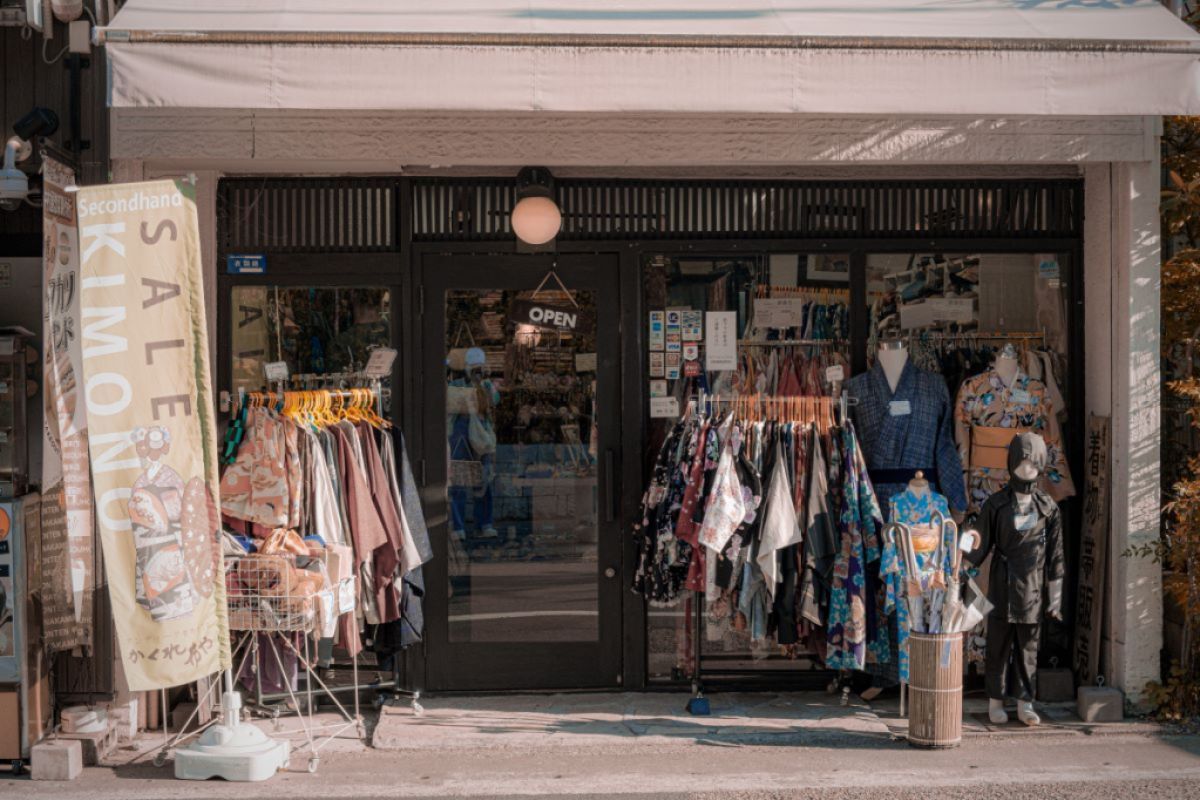
Plan some time for shopping on your day trip to Arashiyama. We popped in and out of shops selling bamboo kitchenware, ornate fans, sushi-shaped candies, and handmade umbrellas. Compared to Kyoto, shopping here was less crowded with smaller boutiques offering unique gifts.
When you need a break from shopping, there are plenty of restaurants, snack vendors, and tea houses to choose from. Try a colorful dango skewer—little, dense balls of rice flour covered in sweet sauce, or a soft-serve ice cream in bamboo or cherry flavor. Many stores offer samples and prices are usually low for snacks. Just go ahead and give it a try.
One must-stop shop to hit on the way back to the train station is Akogareya Market. The packaging alone for most items is enough to make you swoon. From food items in fancy packaging to silk scarves, there’s something for everyone on your souvenir list. After much browsing, I bought several dainty compact mirrors, fabric bracelets, and silk scarves. Free samples and an eager sales woman persuaded me to pick up a package of spicy peanuts and a few boxes of beautiful wagashi, elaborately colored sweets traditionally served with green tea.
People Watching Near the Train Station
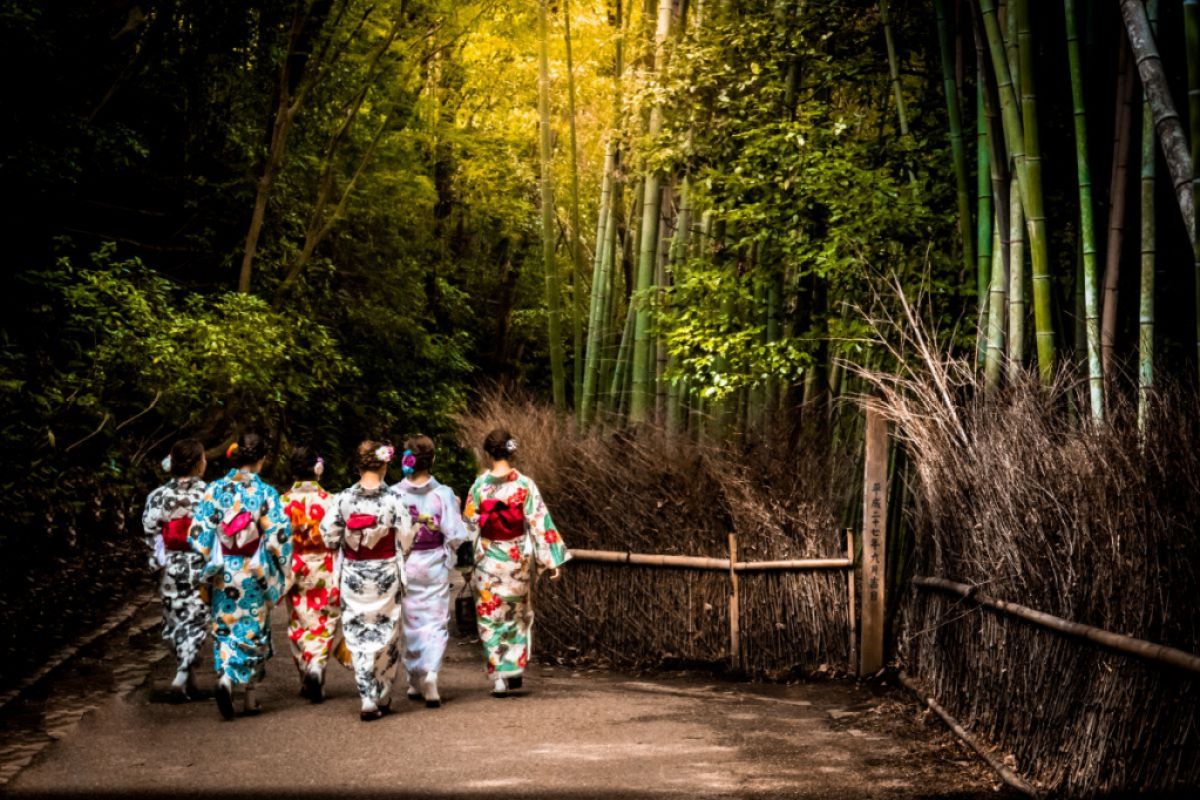
As the afternoon light started to fade and shops were closing, we walked back to the train station. Reluctant to leave this peaceful place, we lingered a little longer, sipping a beer in a small courtyard by the train station. You’ll find shops selling ice cream, stuffed buns, and other treats. There are a few tables and chairs, perfect for watching the world go by. The sun painted the clouds with evening colors as Japanese visitors strolled by in kimonos and yukatas. We lingered until darkness fell, not wanting our time in Arashiyama to end.
Visiting the Kimono Forest
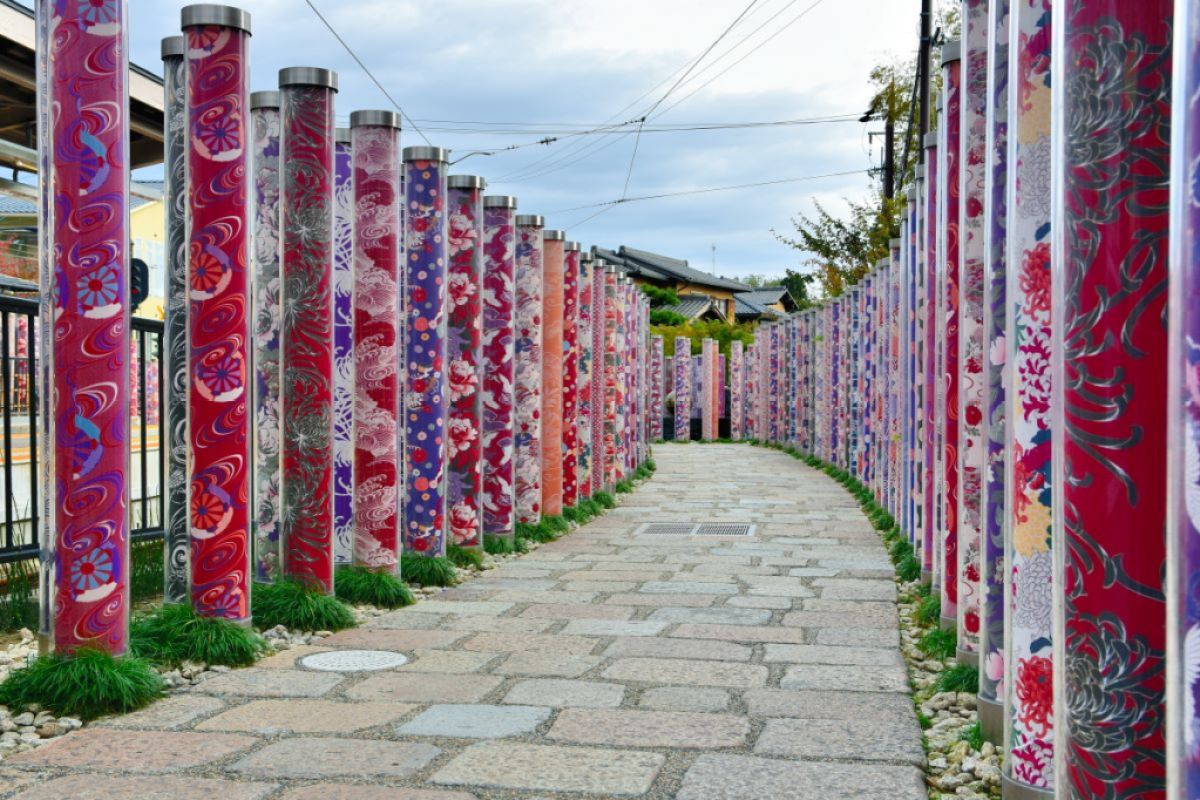
Just outside the Arashiyama station, 600 cylindrical poles decorated with traditional kimono fabric form a “forest” lining a walking path. There are 32 different patterns of fabric inside clear pillars, creating a kaleidoscope of color.
Artist Yasumichi Morita designed this public art display to bring new beauty to the station while preserving traditional elements of style. The fabrics displayed on the 2-meter (6.5-foot) high poles are from Japanese kimono fabric maker Kamedatomi, who has been weaving traditional fabric for a century.
We were impressed with the Kimono Forest in the afternoon when we arrived, admiring the colorful ornate fabric woven with flowers, birds, and geometric shapes. The “kimono trees” are lit up with LEDs at night, making it even more magical. I walked the small paths of the forest, lingering to examine the intricate patterns. Many young Japanese visitors come to this spot to take selfies, dressed in kimonos to match the beauty of the place. With permission, I snapped a few photos of them too.
We visited Arashiyama on a whim, looking for a relaxing afternoon. It turned out to be one of the highlights of our time in Japan. Strolling by the river, soaking up the fall colors, and people watching in this centuries-old village left a lasting impression.
